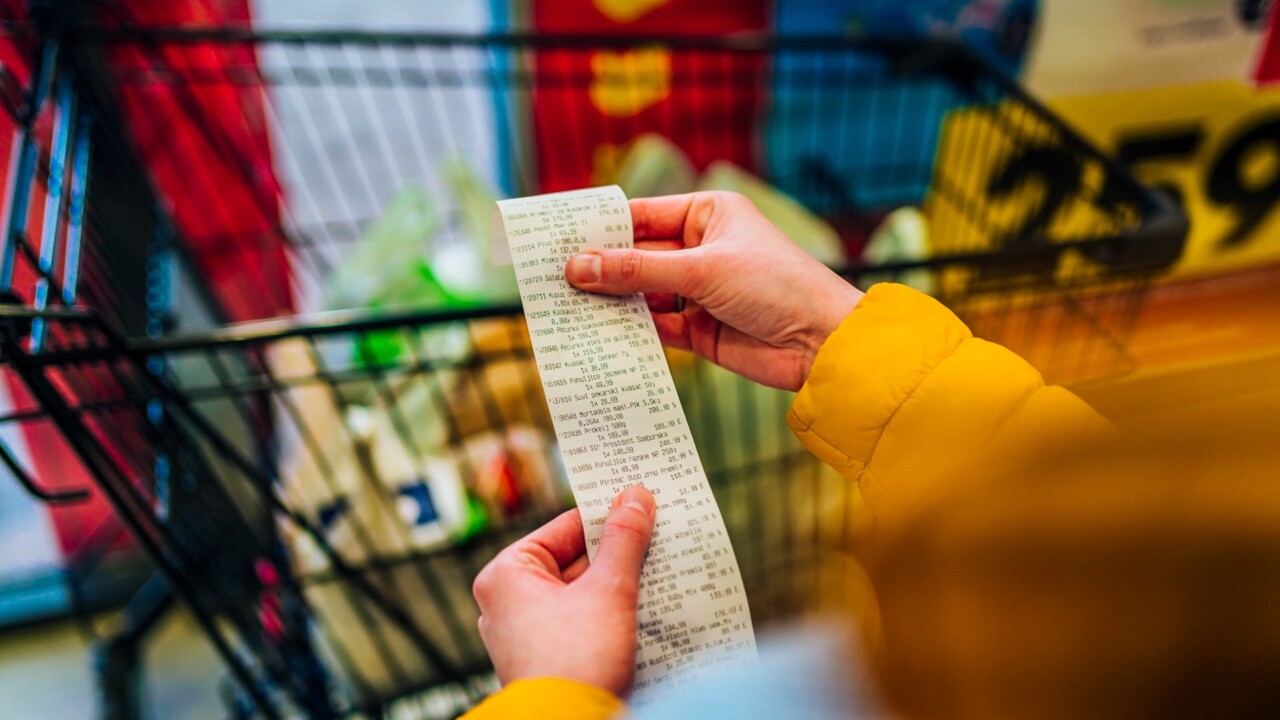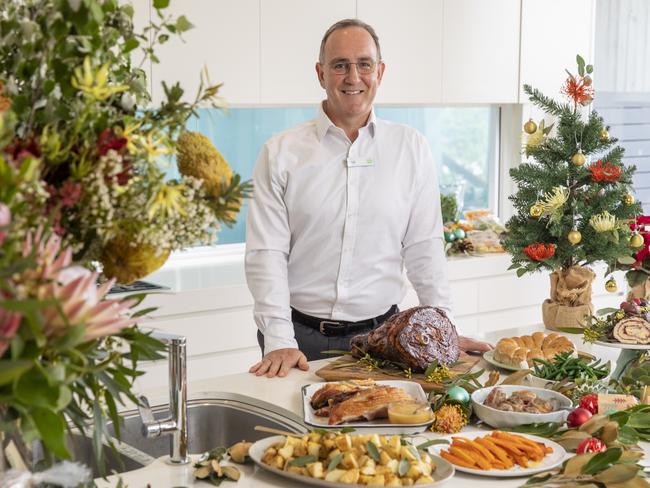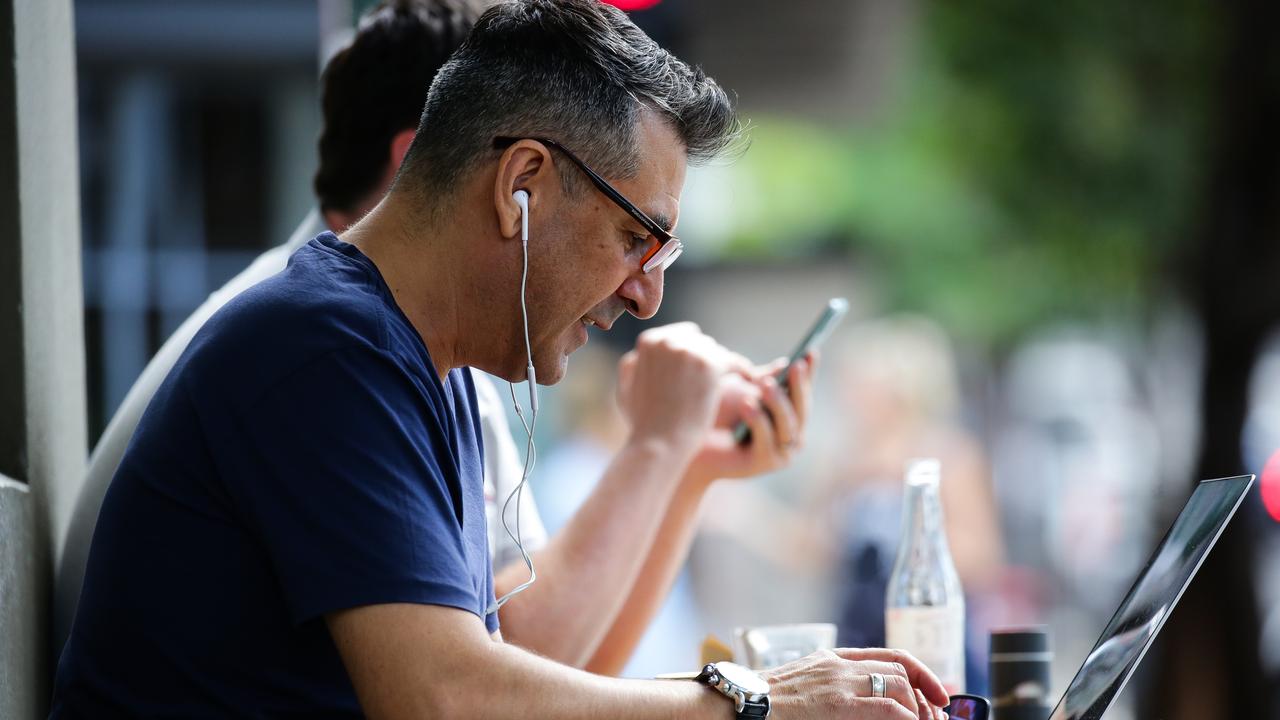‘Where is the money being made?’: Woolies exec grilled over high meat prices in tense interview
A top Woolies executive has been grilled over high meat prices in a tense radio interview, as the supermarket stares down a Senate inquiry.

Retail
Don't miss out on the headlines from Retail. Followed categories will be added to My News.
A top Woolworths executive has been grilled over high meat prices in a tense radio interview, as the supermarket stares down a looming Senate inquiry into alleged “price gouging”.
Paul Harker, Woolworths’ chief commercial officer, appeared on Sydney’s 2GB on Friday where host Chris O’Keefe asked him to explain why customers were “paying the same price” even though farmers were getting roughly half of what they did 12 months ago for their sheep and cattle.
Federal Agriculture Minister Murray Watt last week told news.com.au it “doesn’t pass the pub test that Australians are paying so much more for meat at the supermarket than farmers are getting for their livestock”, and called on Coles and Woolworths to further drop their prices in the lead-up to Christmas.
“Where is the money being made?” O’Keefe asked Mr Harker, adding, “You can see how customers would be a little confused about all this.”
Mr Harker said there were “a few things people that don’t understand about the meat supply chain and what actually happens to a product after it’s been purchased off a producer through to getting onto retail shelves”.

“I think the big thing that’s often missed here is we actually pay our producers on forward contracts, and we pay them for the hot carcass weight – that’s actually the whole animal in the abattoir, and clearly when you pay a price for the whole animal a lot of that product doesn’t make it onto retail shelves,” he said.
“Twenty-five per cent of the animal we buy goes into fats and render, another 21 per cent is cuts that we don’t use in this country and there’s a very small export market for them with very low prices, like lips, ears, various cuts that don’t make it onto supermarket shelves. That leaves us with just over half of the animal left that goes onto supermarket shelves, so by definition we nearly need to double the price per kilo that we pay for the whole animal to sell the half of the animal that Australian consumers buy.”
Woolworths buys direct from farmers, rather than through saleyards, on three- to four-month contracts which Mr Harker said were “well above” the widely quoted livestock market prices.
“I don’t have the figure in front of me now … [but] the latest contracts we’ve just gone into I know are well over $6 a kilo,” he said.
“We work with our producers that have been supplying us for decades to manage pricing so they don’t have the strong swings and roundabouts that happen in the livestock market that we don’t play in, so they can invest in their business. We buy directly off farmers and pay for all of the processing right through our supply chain.”
He pointed out that “when you think about that 54 per cent of the animal and look at our beef sales, about 40 to 50 per cent of our beef category sales are in mince, which is $11 a kilo”.

“Things like eye fillet, which people can point to and say is sold at a high price per kilo, that makes up 1.3 per cent of the animal that we bought,” he said.
In the lamb category, where saleyard prices have plummeted even more sharply than beef, Woolworths recently “dropped the price on 20 cuts by over 20 per cent on the back of already discounting lamb”.
“Compared to a year ago customers are paying on average 30 per cent less per kilo for lamb than the same time last year whilst our processing and manufacturing costs have risen by over 7 per cent, and lamb prices for us, because we don’t buy off the saleyards, have only fallen by 24 per cent,” Mr Harker said.
“Customers are actually getting a better deal, our margins on lamb have never been lower.”
O’Keefe pointed out that Woolworths reported a 4.6 per cent increase in net profit to $1.62 billion last financial year, while operating margins in the food division increased from 5.3 per cent to 6 per cent.
“What I can say is the meat category is the lowest margin category in the business and our lamb margin has never been lower with the prices we’re running with,” Mr Harker said.
To challenge this assertion, O’Keefe pulled up a Woolworths catalogue from last year.
“Forequarter chops, boneless leg roast, bone-in lamb shoulder, it’s the same deal — you’re basically selling it for the same price today as you were 12 months ago,” he said.
“That’s not correct,” Mr Harker said. “All of our lamb has been reduced by 20 per cent recently. If you go back a year ago customers are actually paying 30 per cent less for all of the lamb products in our business.”
“Was the catalogue wrong, was it?” O’Keefe asked.
“No – I haven’t got the catalogue from that year in front of me,” Mr Harker said.
“They would be promotions as opposed to the standard price which is what we’ve dropped the lamb to now. Lamb leg has gone from $15 a kilo to $12 to $10 to now $8, which is the cheapest it’s been since 2014. They would have been yellow promotions and the stamped shelf price would have been higher than that. Using one week’s promotion versus a whole category …”

“Hang on – this is what we pay,” O’Keefe said.
Mr Harker insisted that “every single product in the lamb category has been reduced in price”.
On Wednesday, Woolworths and Coles both confirmed their chief executives would appear at the Senate inquiry into supermarket prices next year, after the probe was established by the Greens and Labor.
“We are very aware of the pressures facing many Australian families,” Woolworths chief executive Brad Banducci said in a statement.
“We welcome the opportunity to explain to the Senate how we are working to balance the needs of our customers, our team and our suppliers in the context of economy-wide inflationary pressure. As we have done at several inquiries this year, we will openly and constructively assist the parliament with its work on this important topic. We are proud to directly employ 180,000 team members in Australia and support the livelihoods of 18,000 suppliers in the communities we serve.”
Coles chief executive Leah Weckert acknowledged cost-of-living pressures were “front-of-mind for many Australians and we are working hard to keep prices affordable for Australian households”.
“We have worked collaboratively with previous inquiries and are ready to work with the Committee and engage in an informed discussion on the factors that influence supermarket pricing,” she said in a statement.
“We continue to invest in providing great value to our customers, supporting our network of more than 8000 suppliers and providing employment to more than 120,000 Australians right across the country.”
Greens economic justice spokesman Senator Nick McKim said it was “time to smash the duopoly”.
“Coles and Woolworths are making billions in profits by price gouging in a cost of living crisis,” Mr McKim said last week.
“For too long the big supermarkets have had too much market power. This allows them to dictate prices and terms that are hitting people hard.”
Originally published as ‘Where is the money being made?’: Woolies exec grilled over high meat prices in tense interview





